The Visitor Center houses an archaeological museum with artifacts found here. The four (primary) cultures that have lived here include: Paleo-Indian (17,000 years ago); Archaic (11,600 years ago); Woodland (3,000 years ago); and, Mississippians (1,100 year ago).
The Paleozoic were nomadic and hunted large mammals; the Archaics were hunters and gatherers; the Woodlands lived in thatched huts in villages; and, the Mississippians had an advanced and skilled farming community that built mounds for religious, ceremonial and burial purposes.
Spearheads found during the archeological dig here date to the Paleo period. Many pottery shards have been found and pieced back together by experts. Pottery is durable and provides clues about cultural changes over the last several thousand years. Carved stone effigies have also been found here. Below are turtle shell rattles similar to remnants of ones uncovered during the dig.
Mound communities have been found in other parts of the US. We have visited two others thus far (Cahokia in IL and Kolomoki in GA) and have found them all fascinating. It was a time when man lived in harmony with Mother Earth.
Buildings found in the Mississippian village ranged in size from mostly 200 square foot residences to buildings that were up to 1800 square foot buildings. The walls were wattle and daub with thatched roofs. Large round structures (earth lodges) were constructed for gatherings and built half underground.
But the mounds are the most amazing remnant of the Mississippian culture. Workers built 10-story-tall mounds by carrying baskets of dirt on their heads, shoulders, and backs. They used no draft animals and had only stone hoes, digging sticks, shell scoops, etc. It definitely required great strength to carry the 60-pound basket (the museum had on display) to the top of a mound many times a day. Solar alignments and string lines with stakes were used for the design and positioning of the mounds.
It is believed that explorer, Ferdinand De Soto, traveled through this area in 1540. Of course, after Native Americans interacted with Europeans their lives changed forever.
With the map in hand that we picked up at the Visitor Center, we headed out to see the mounds. Following the trail we first came to a reconstructed earth lodge. Forty-seven people would sit around the perimeter of the round structure with three leaders in the center. The original clay floor in this lodge is over 1,000 years old and can be seen through the glass enclosure inside. The huge support trees are positioned where the original ones once were.
Nearby is the Cornfield Mound and is assumed to have been used for ceremonies.
From this location we were able to see the Great (left) and Lesser (right) Temple Mounds.
A bridge crosses over the train tracks that were constructed by the Central Railroad and Canal Company in 1873. Portions of the Funeral Mound were destroyed when it was built. Skeletons, shells, spear points, clay pipes, and earthen pots were unearthed by railroad workmen. When the railroad company first constructed the line between Macon and Savannah in 1843, portions of the Lesser Temple Mound were destroyed.
A trading post store was situated on this site in the late 1600s/early 1700s. Native Americans here (Creeks) traded furs and skins for guns, iron pots, knives, and cotton cloth.
We continued along the path to the Great Temple Mound. It is 55' high and 300' by 270'. A wooden stairway provides access to the top of the mound. The mound was topped with rectangular wooden structures assumed to be used for religious ceremonies.
From the top we had a great view of the Lesser Temple Mound (right) and the Funeral Mound (in the distance on the left). Evidence of over 100 burials have been discovered in the Funeral Mound.
We also had a great view of the Walnut Creek wetlands from the top of the Great Temple Mound.
What a fascinating place! We are always interested in learning more about the interesting history of Native Americans. The amount of effort it took to build these mounds is amazing. The Ocmulgee National Monument does a great job in preserving this site for us and future generations.
Website: www.nps.gov/ocmu
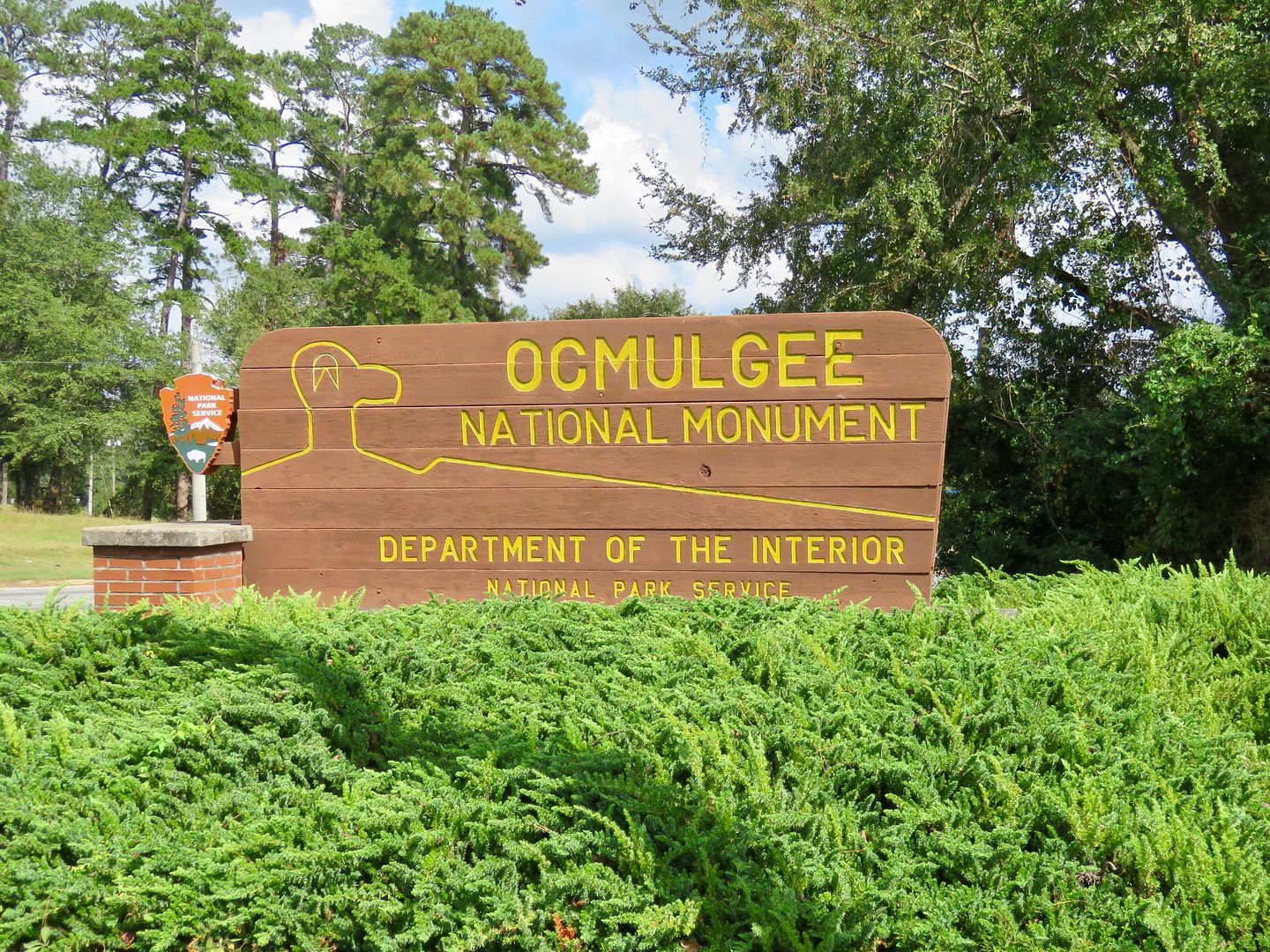
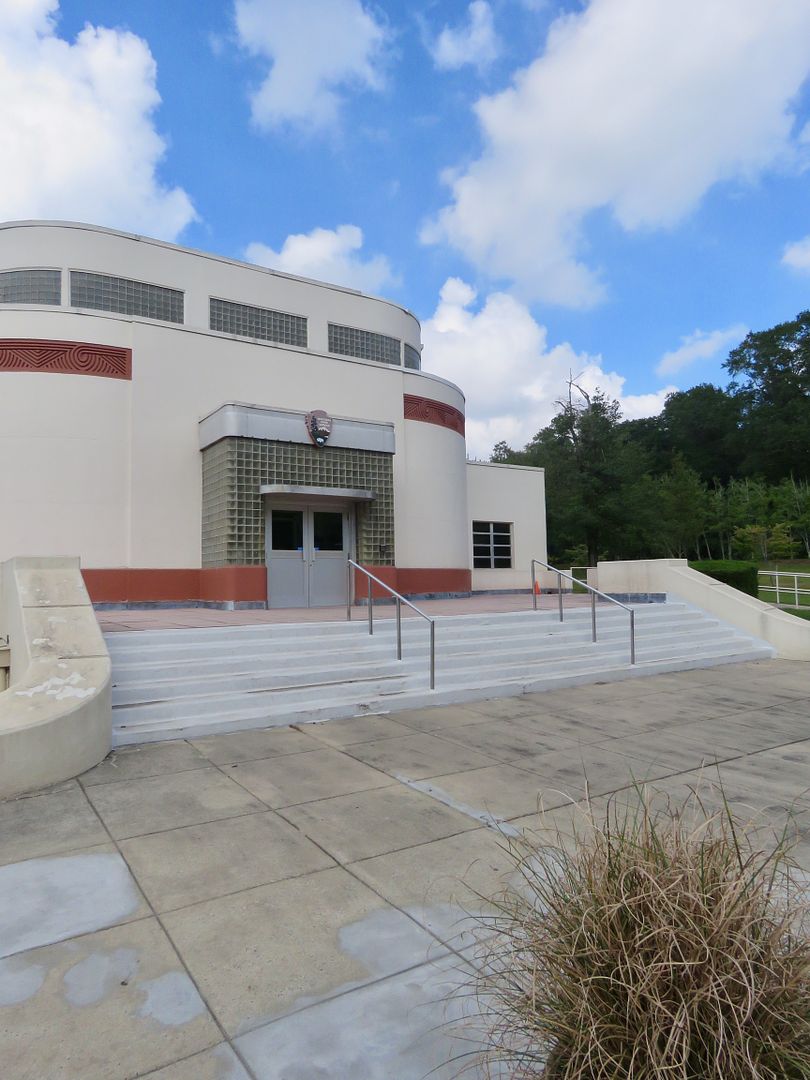
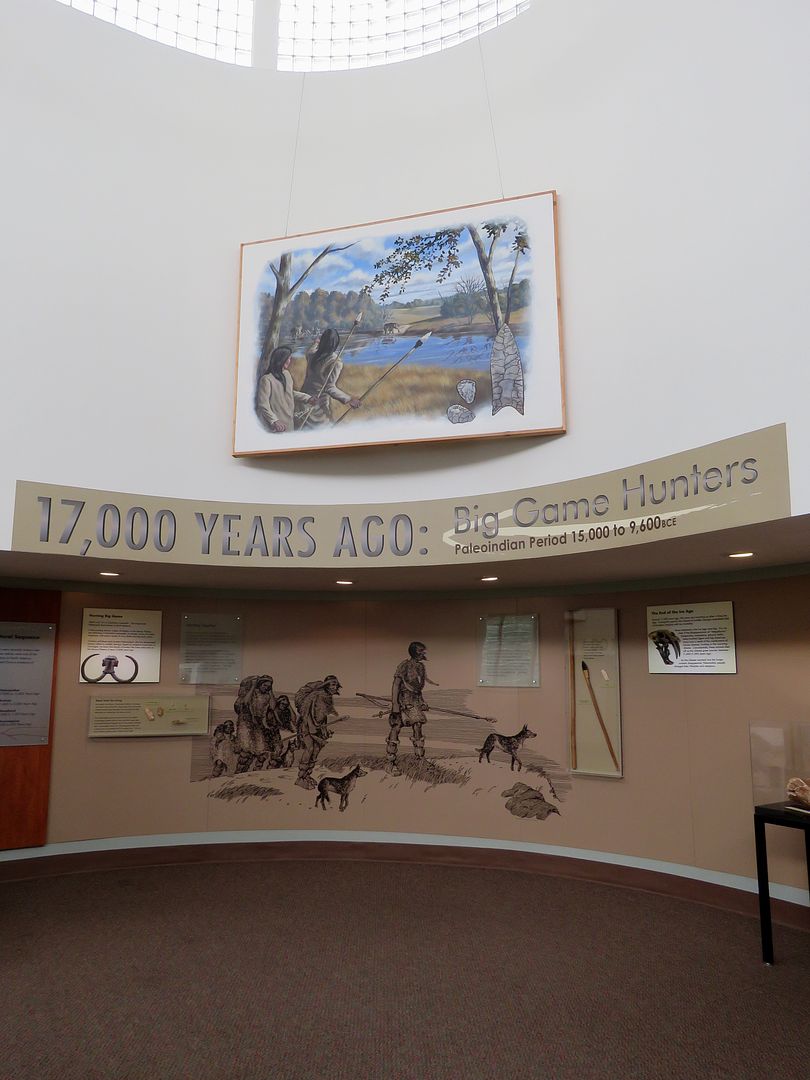
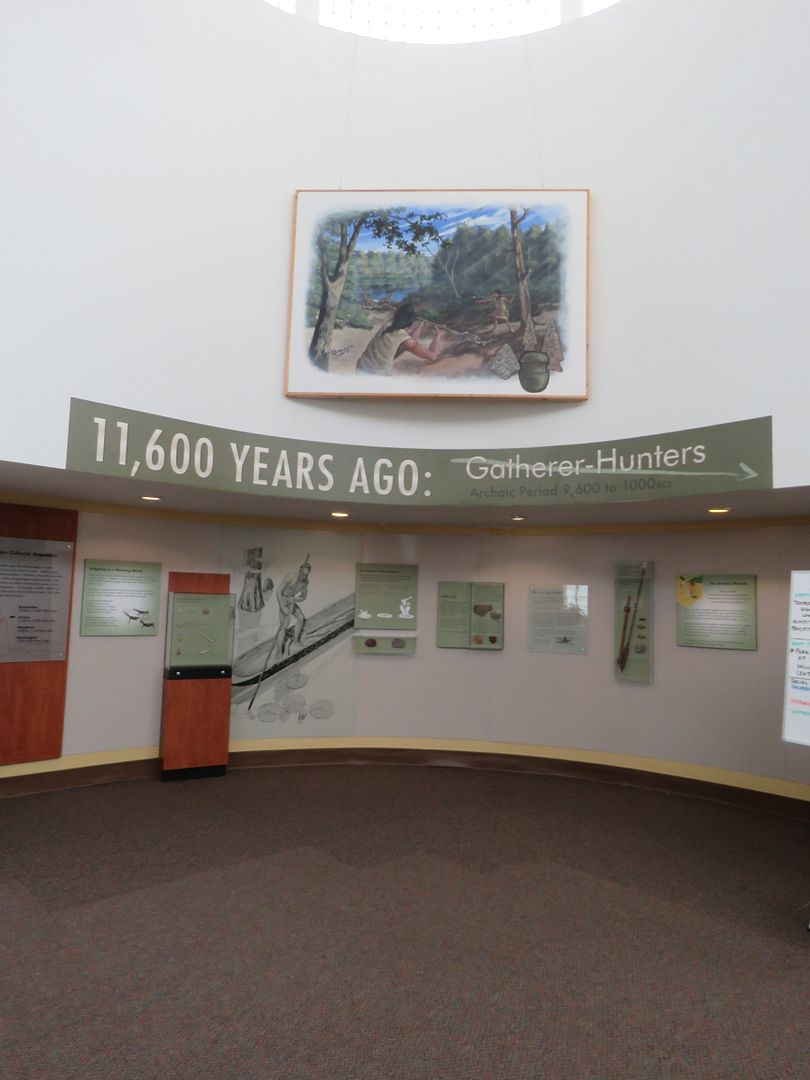
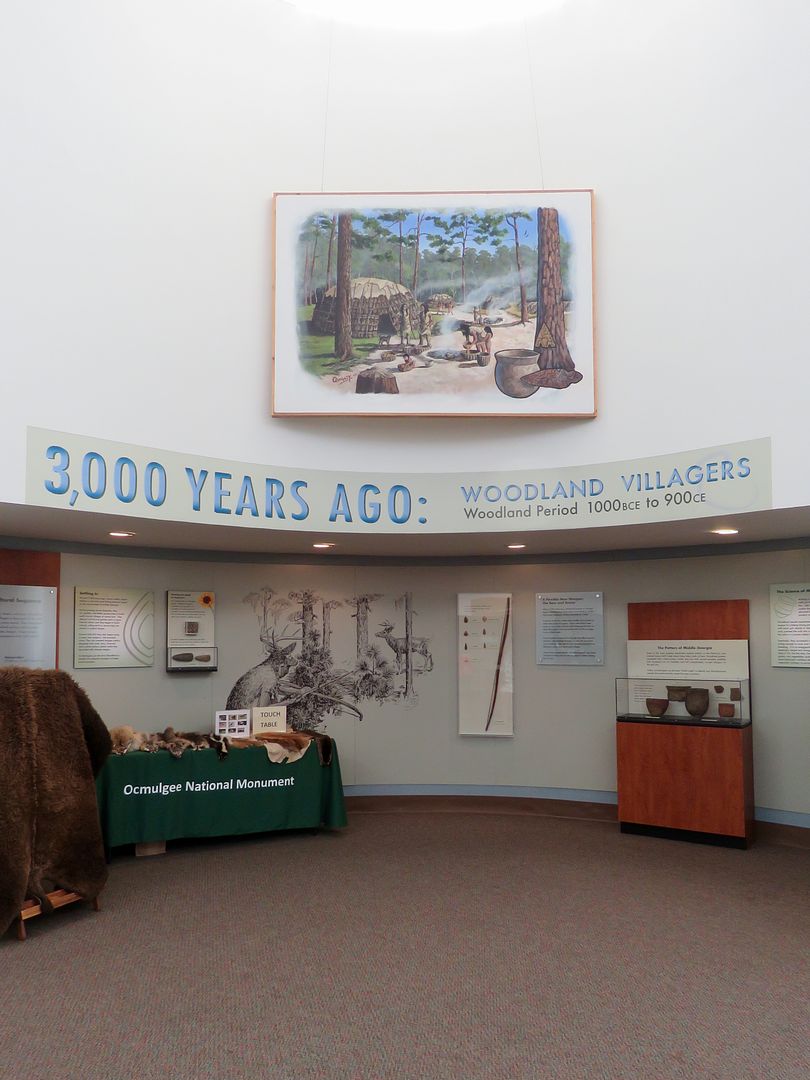
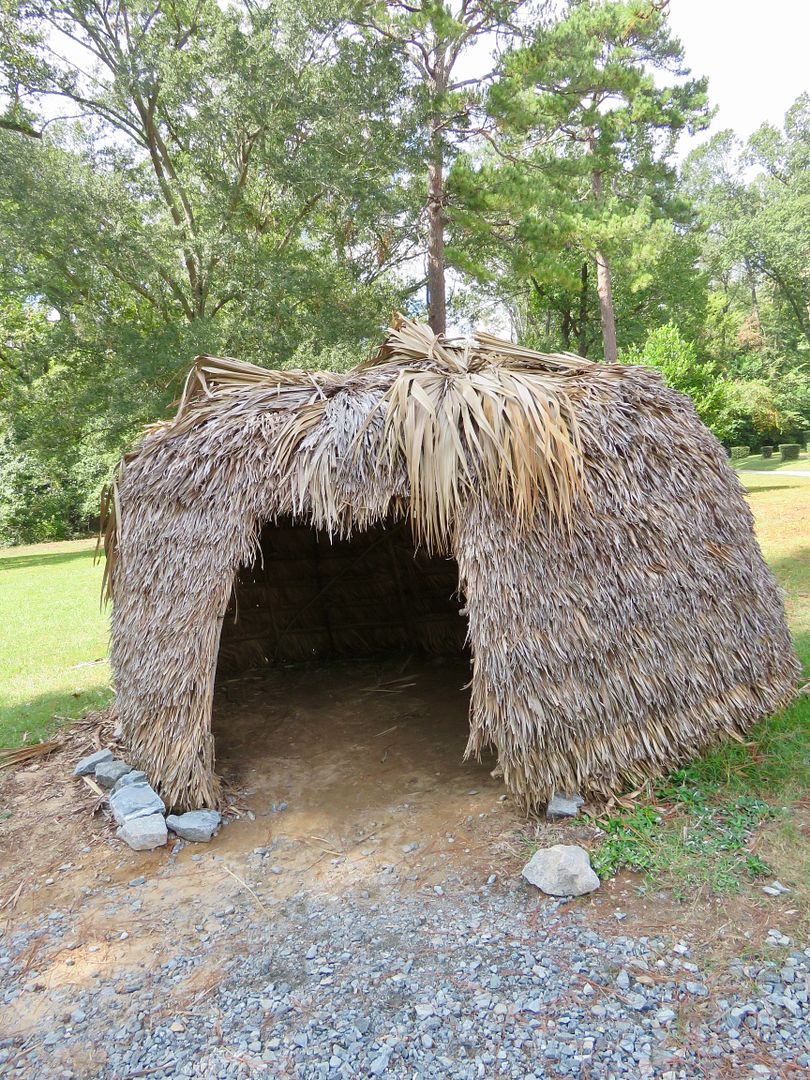

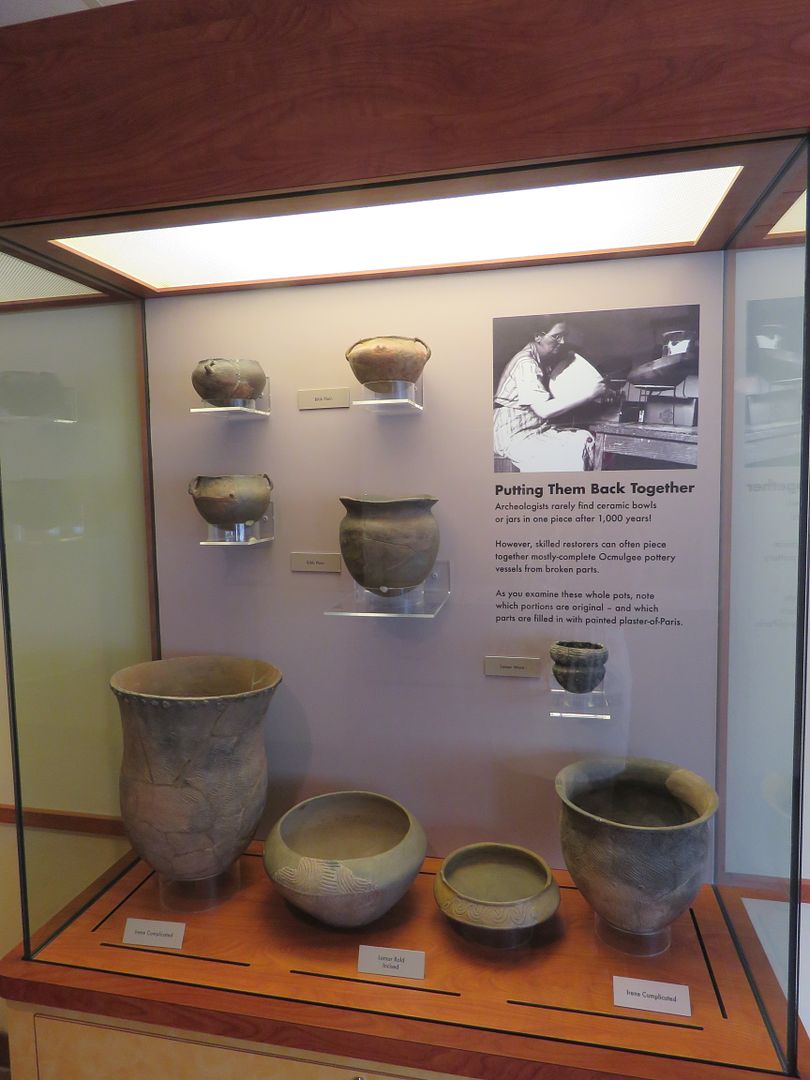
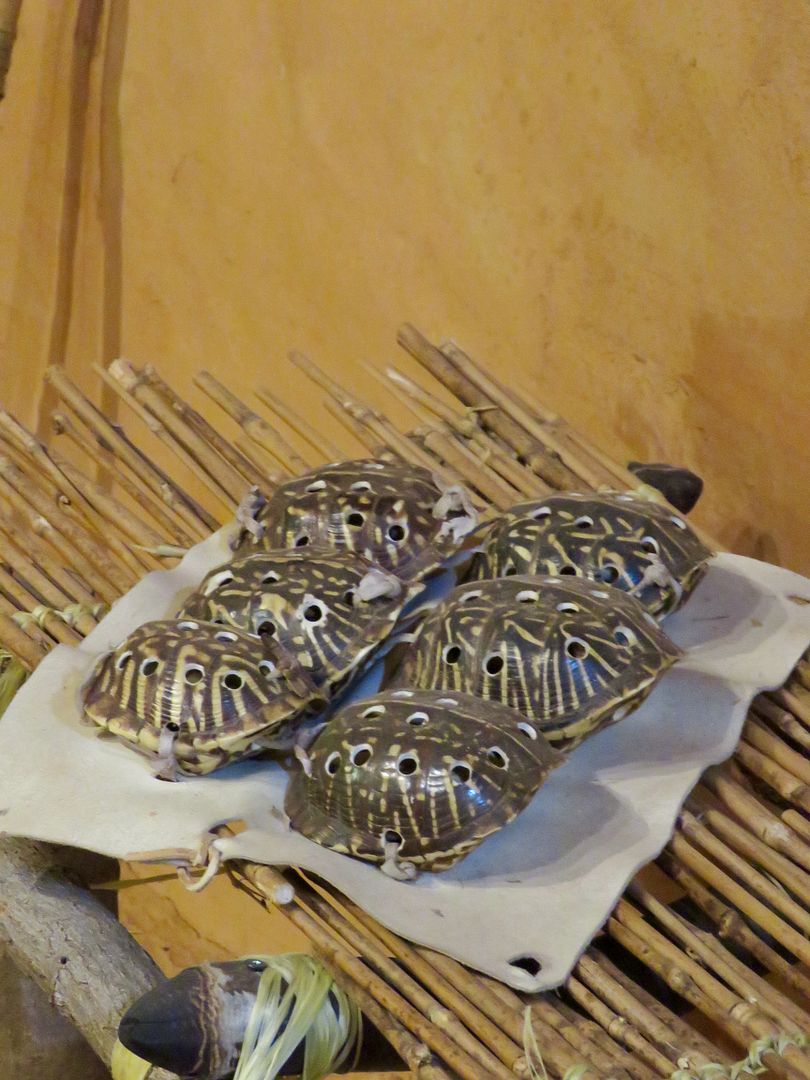
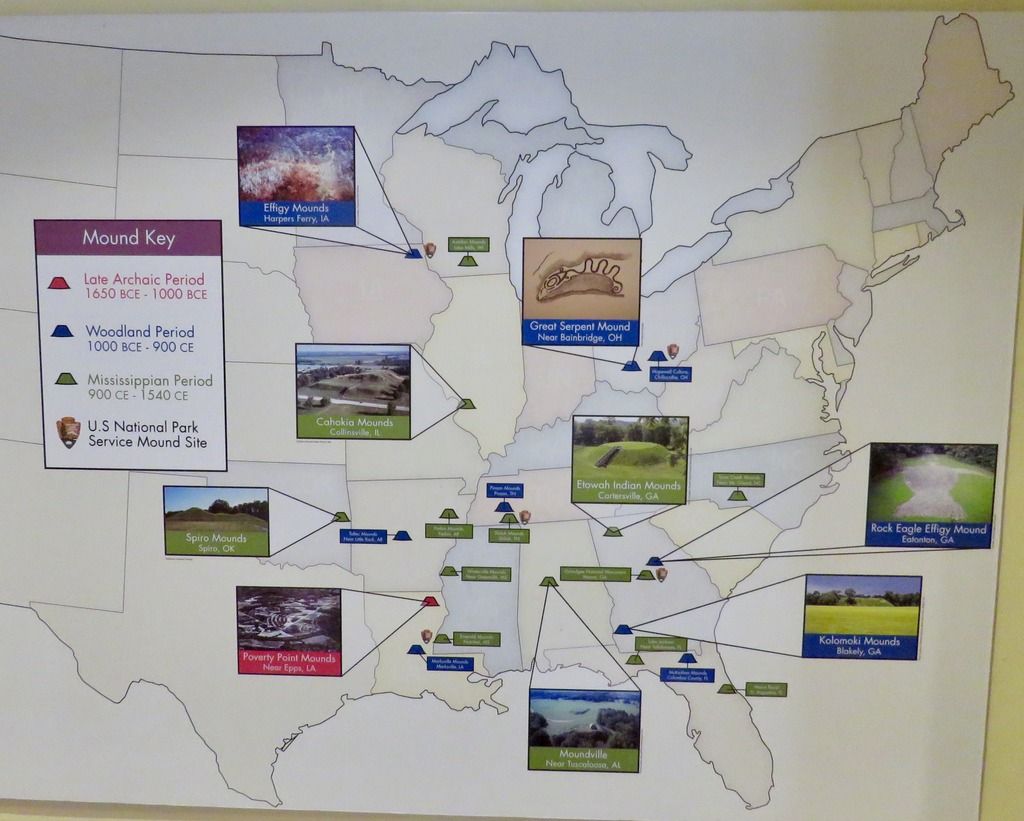
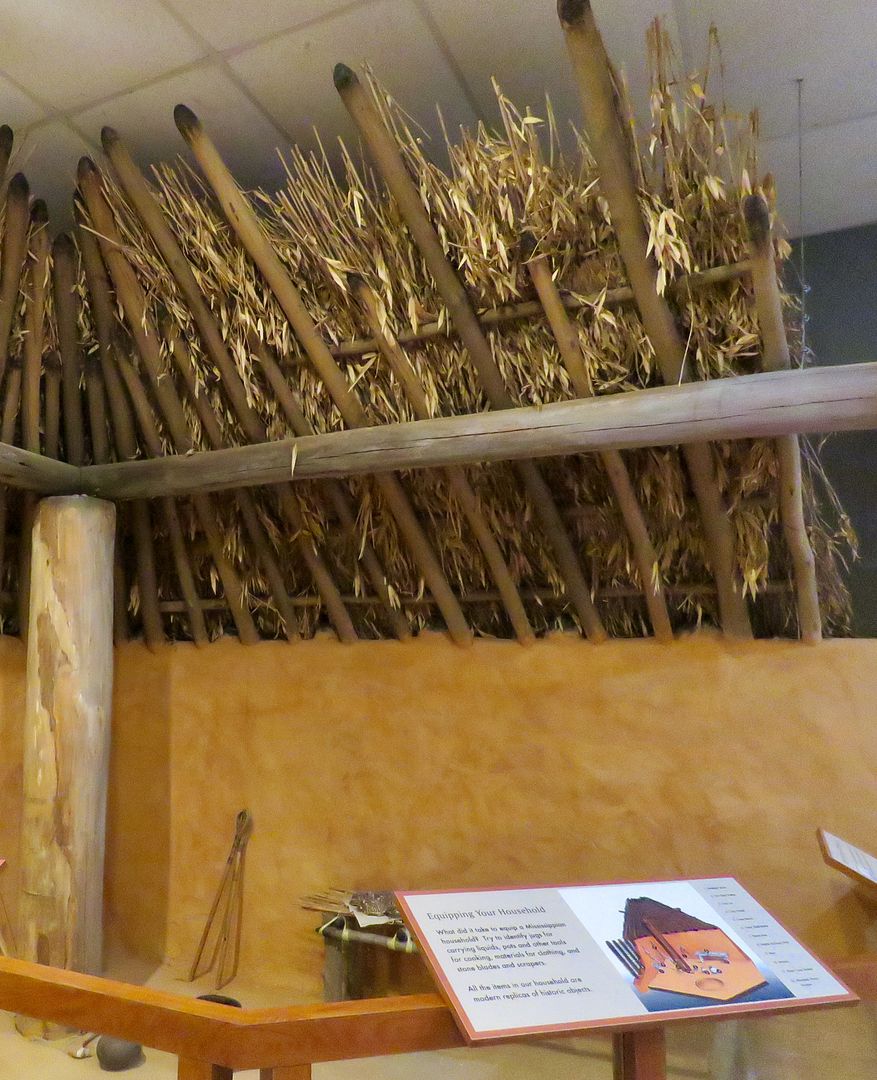
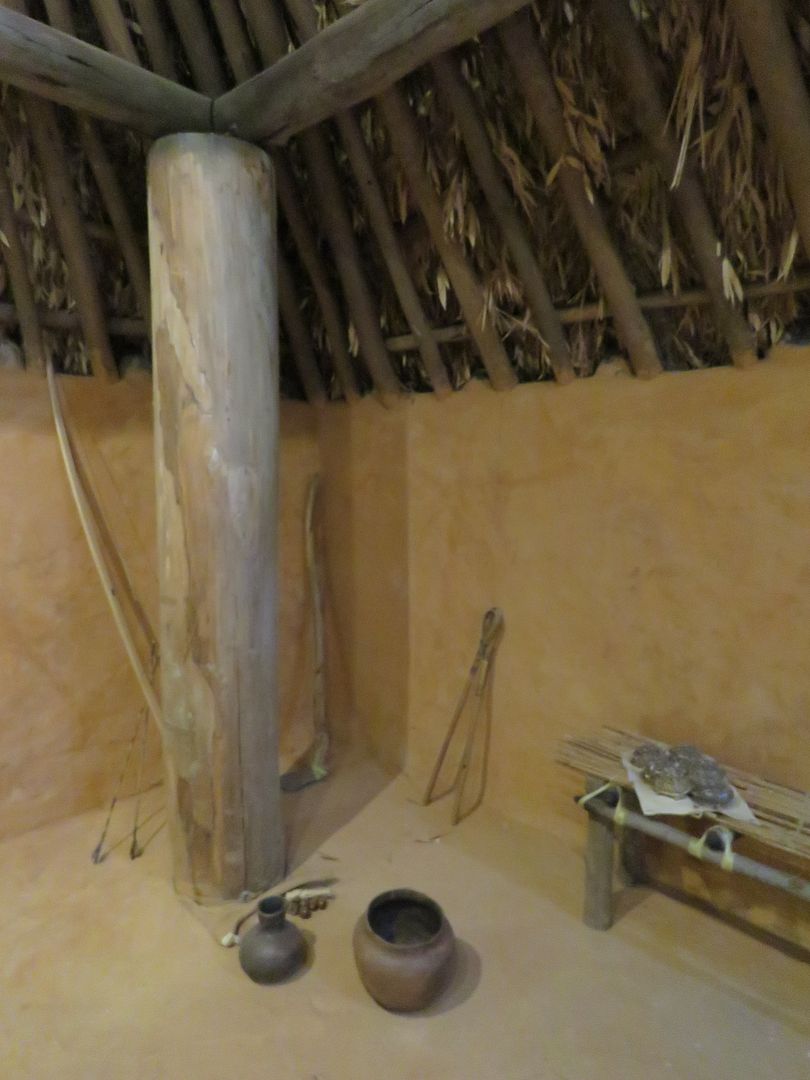
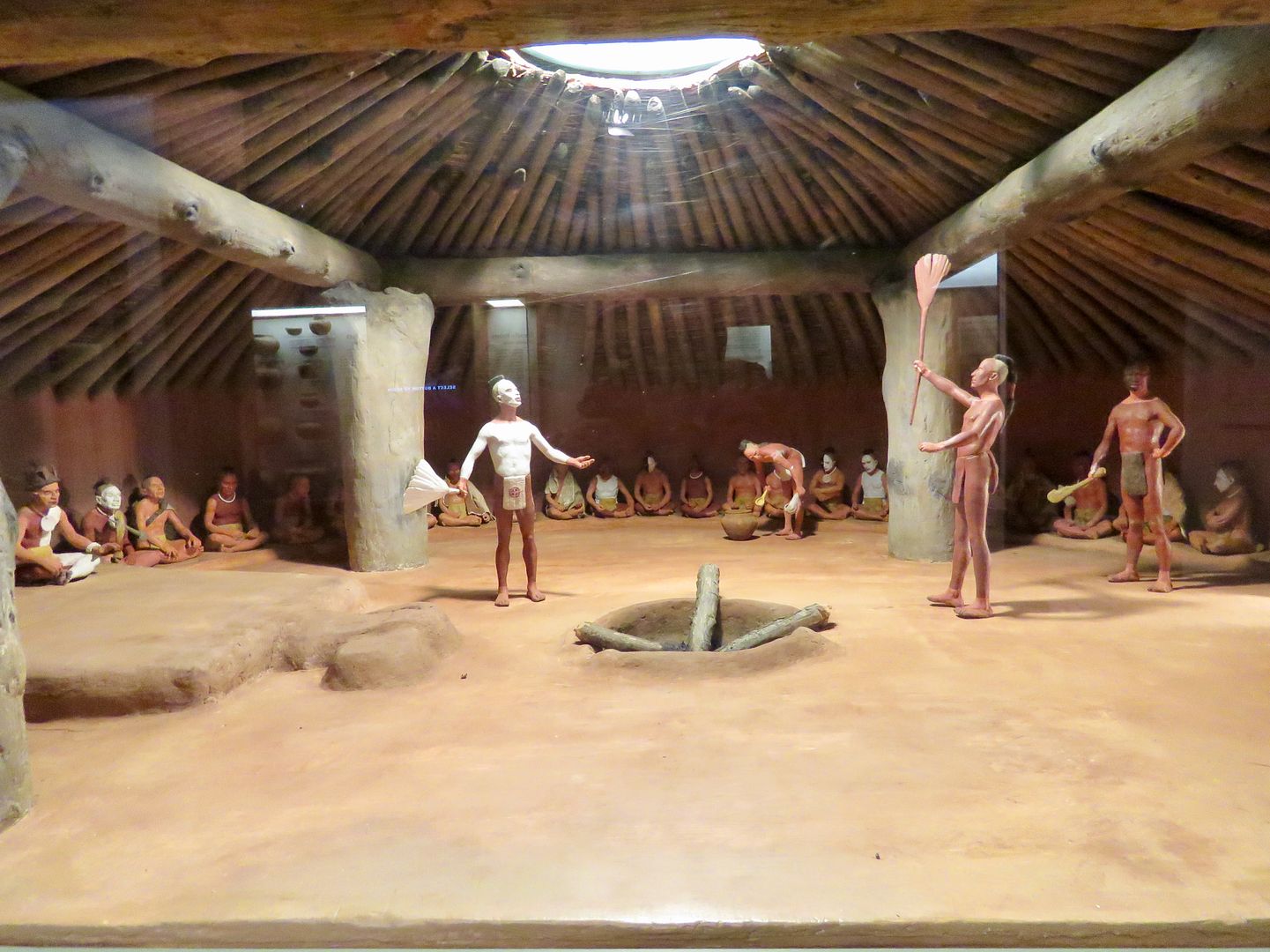
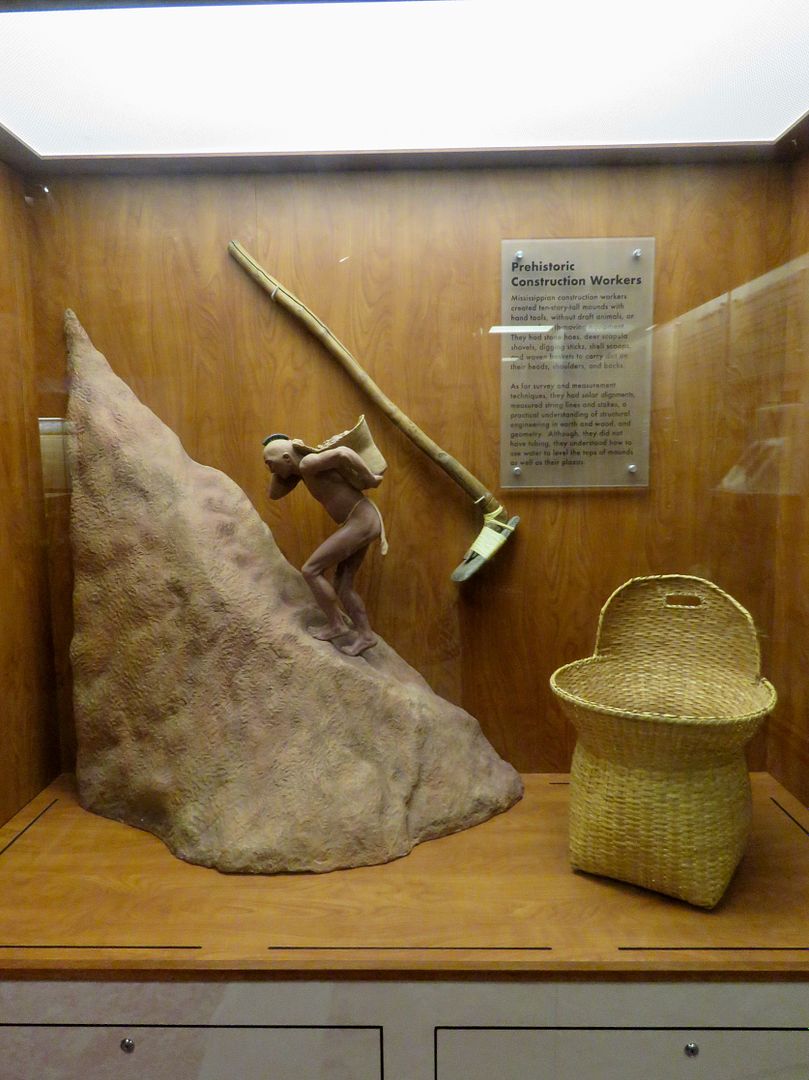
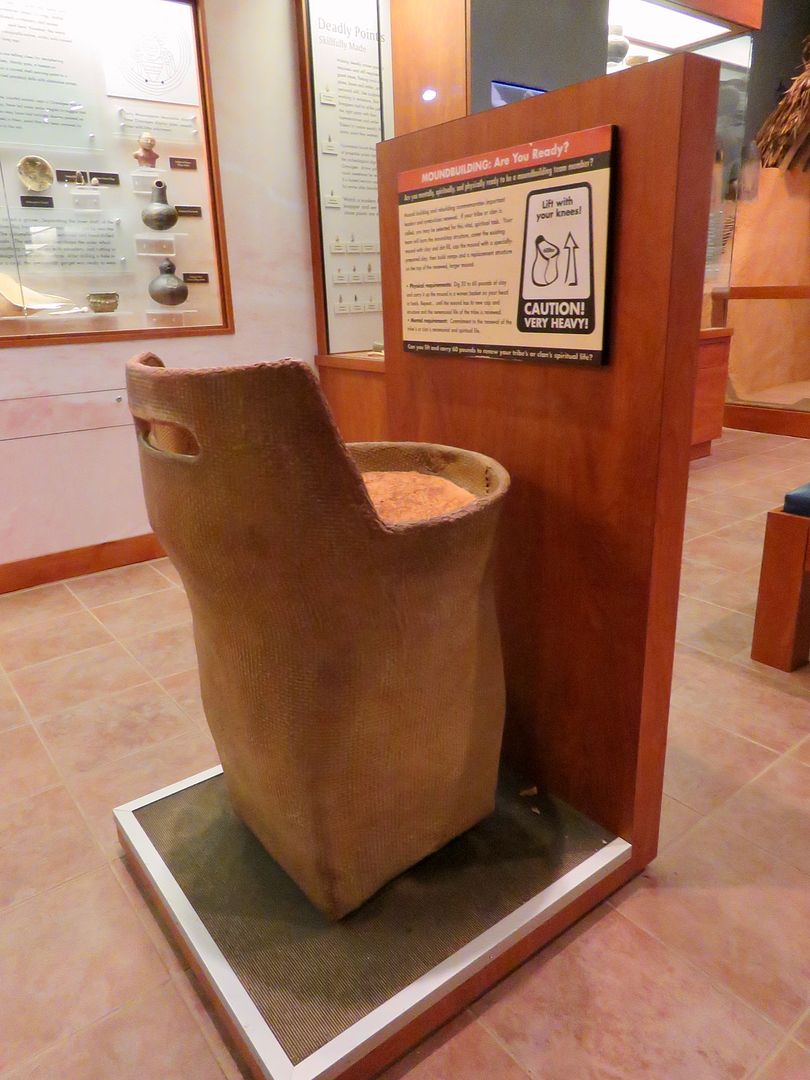
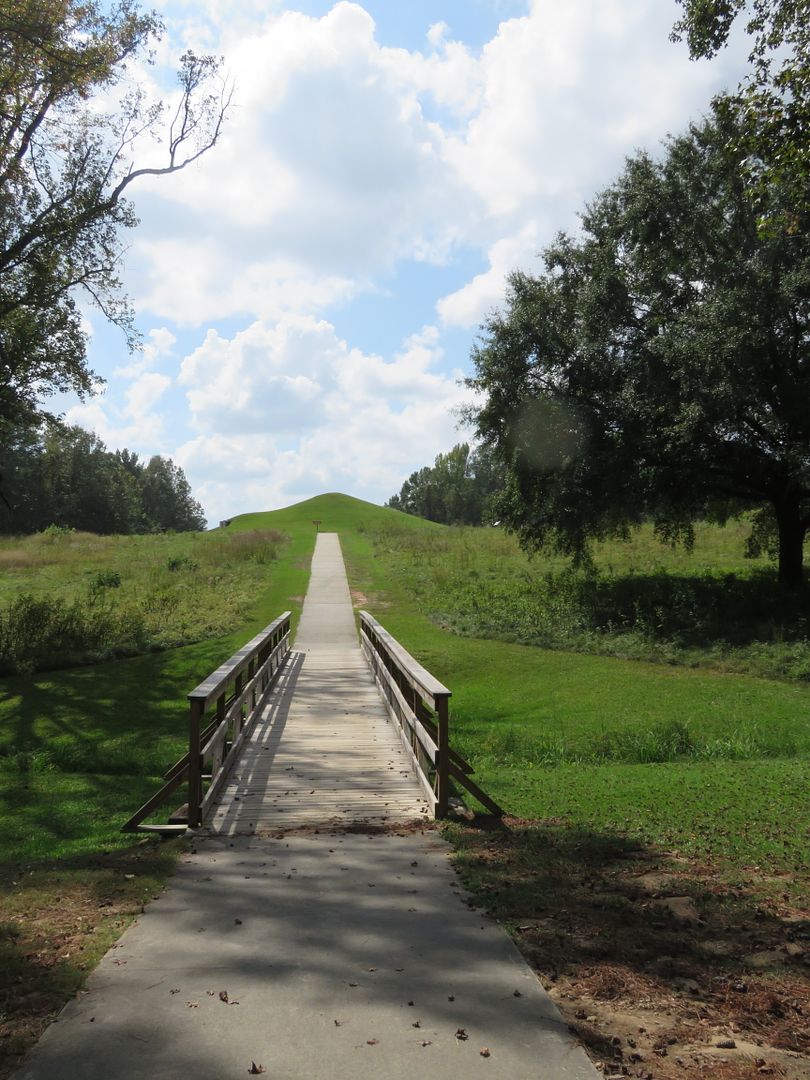
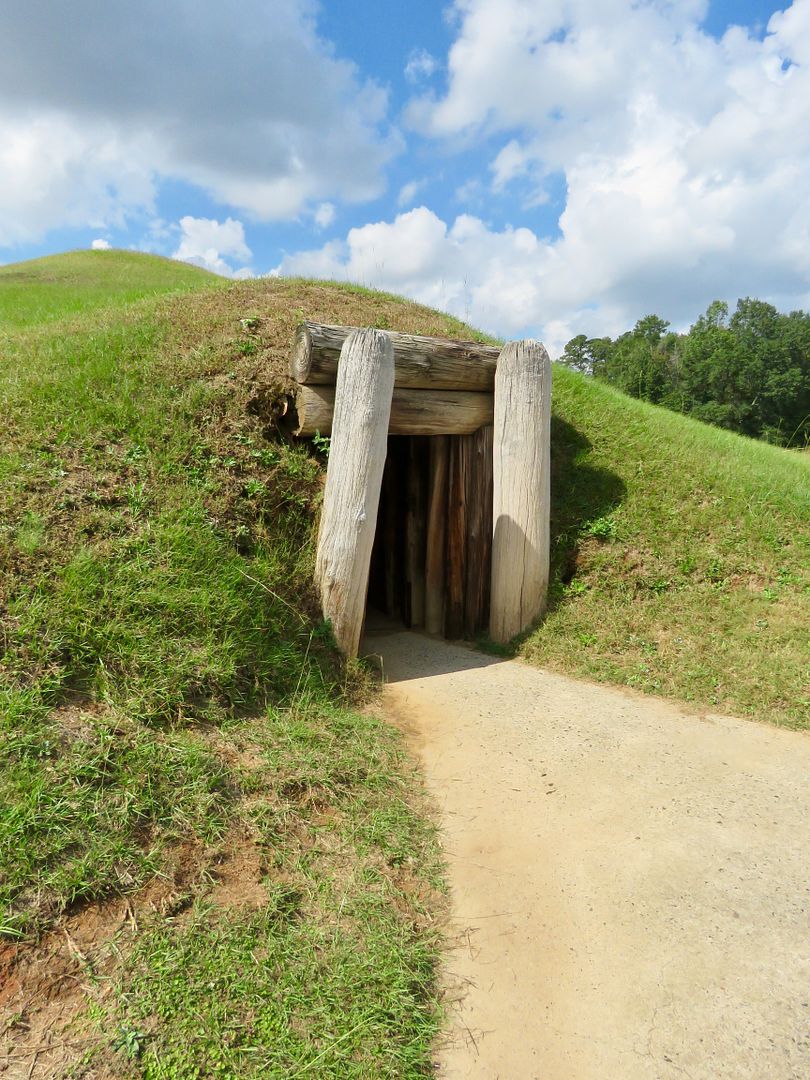
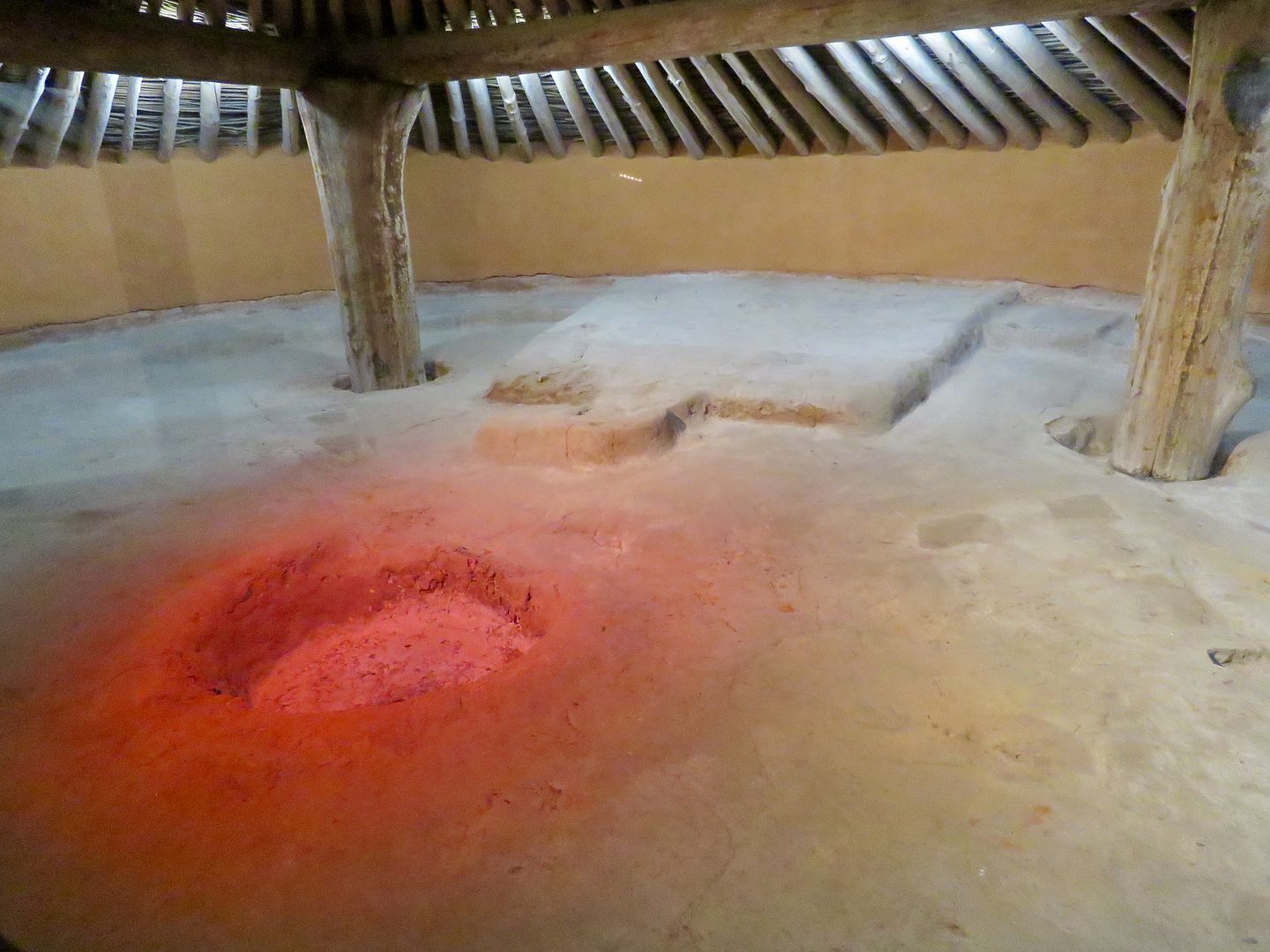
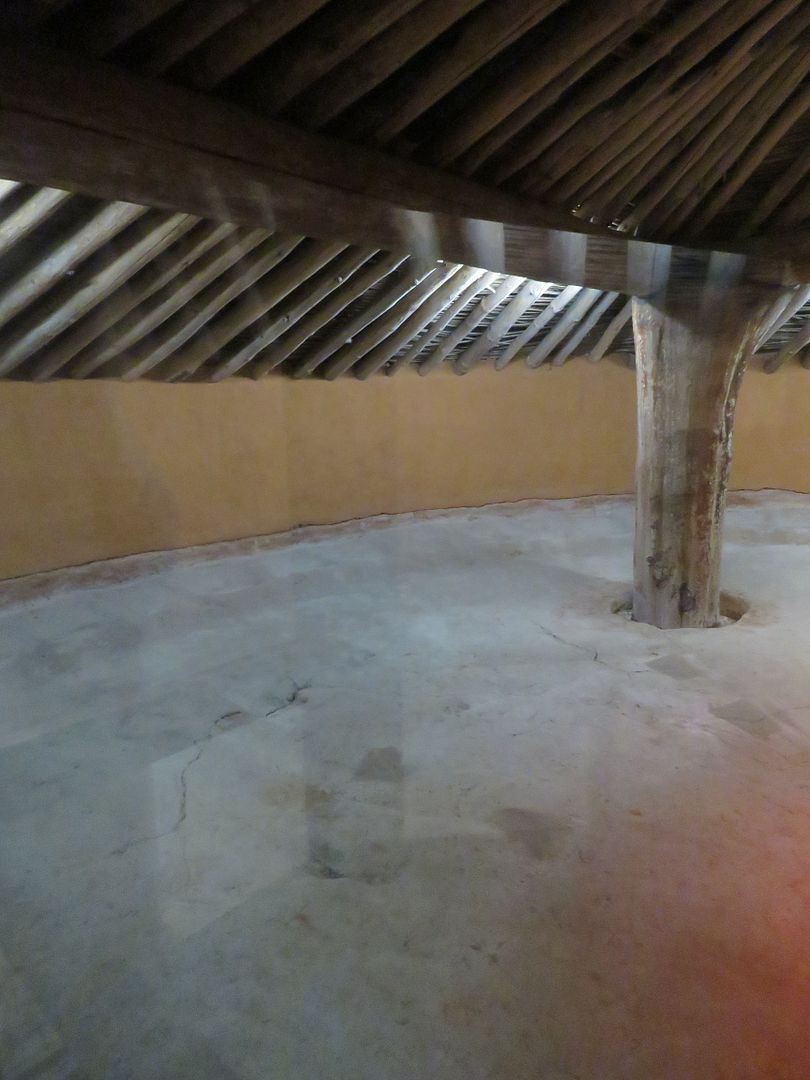
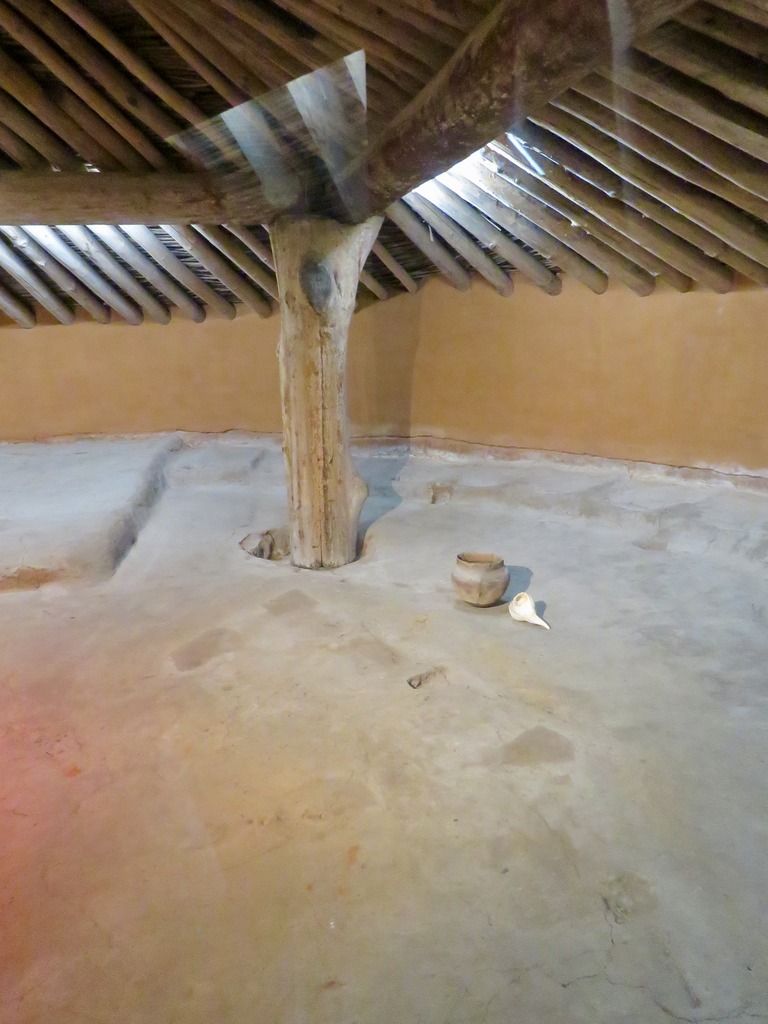
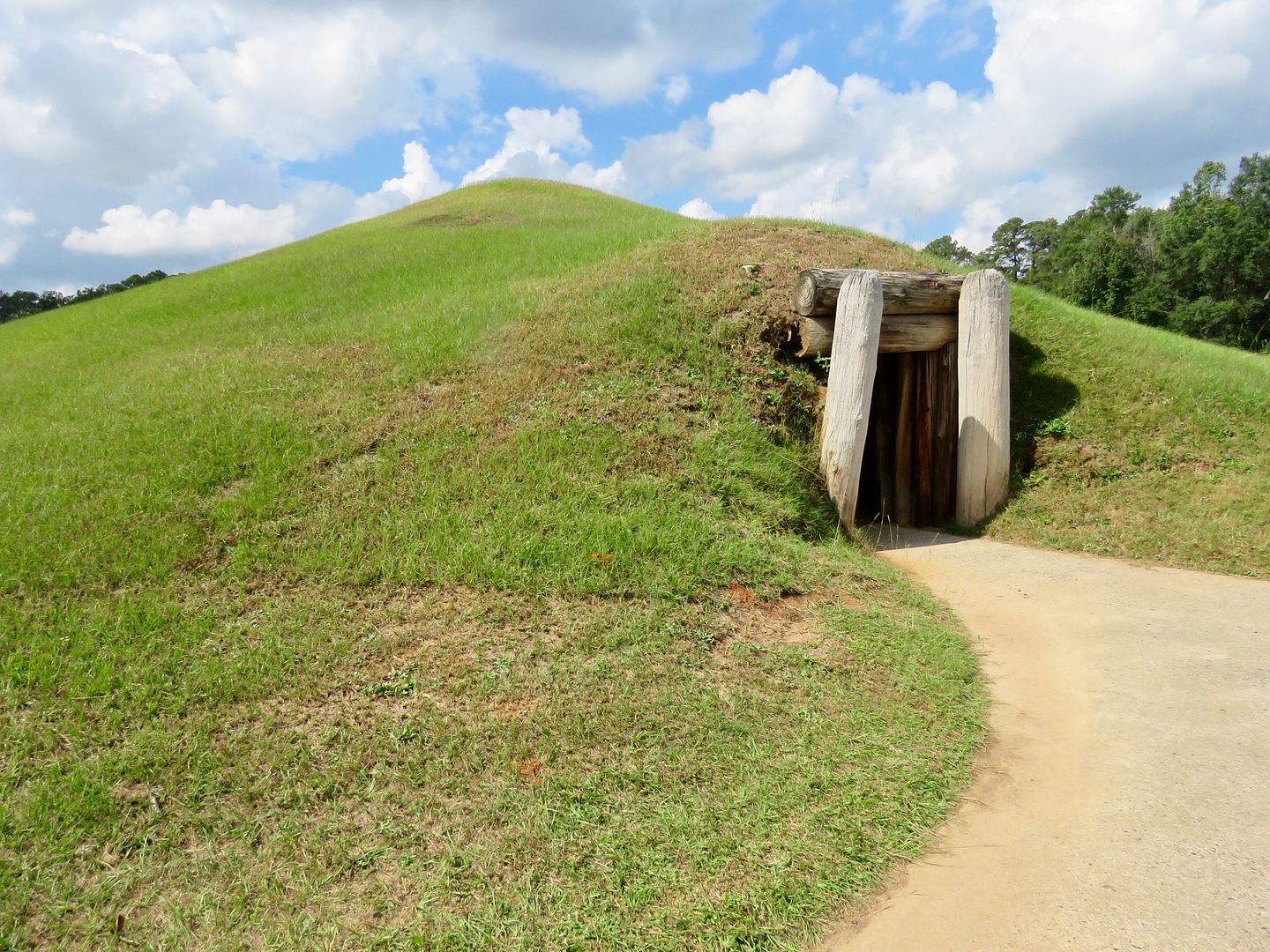
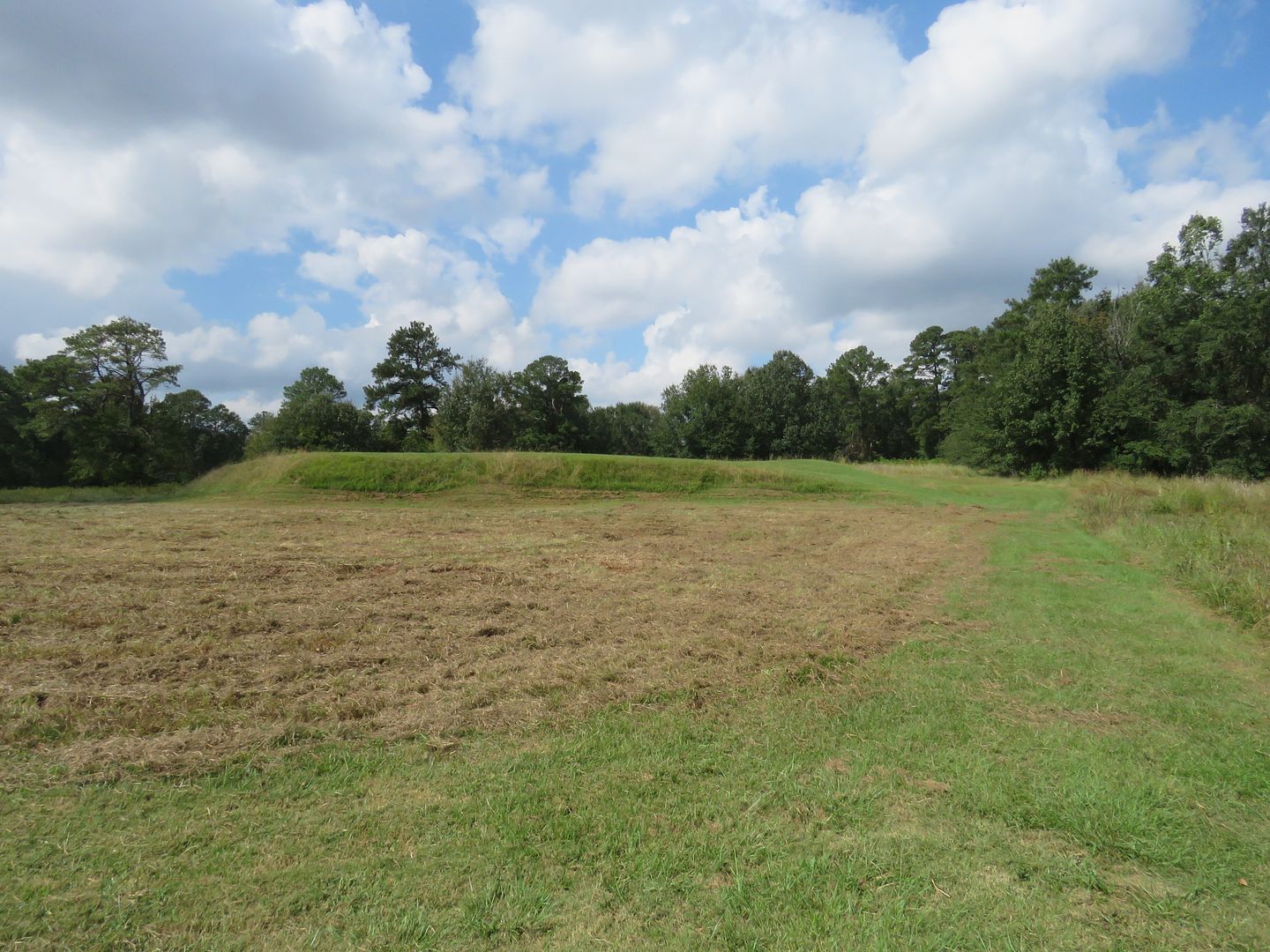
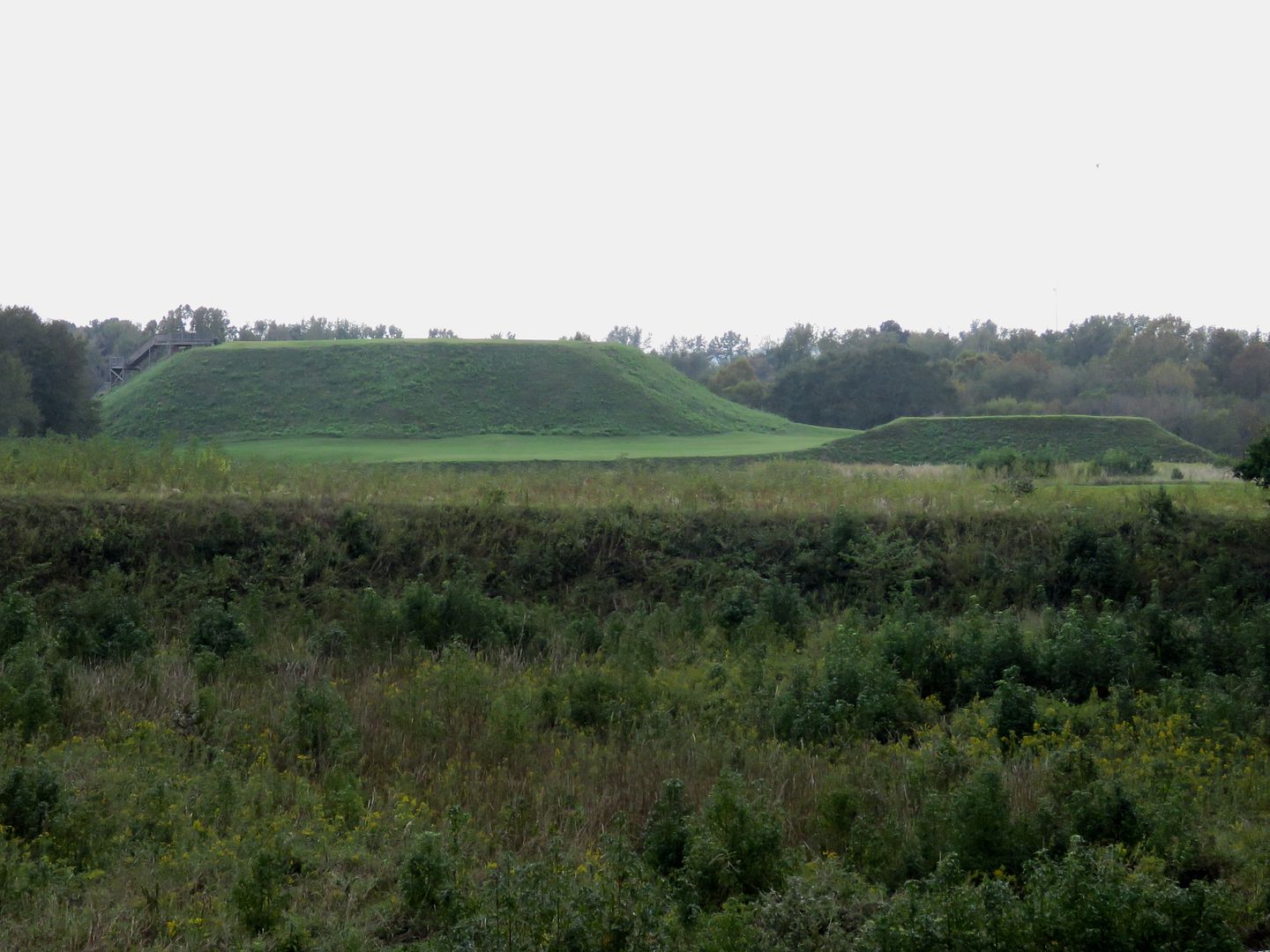
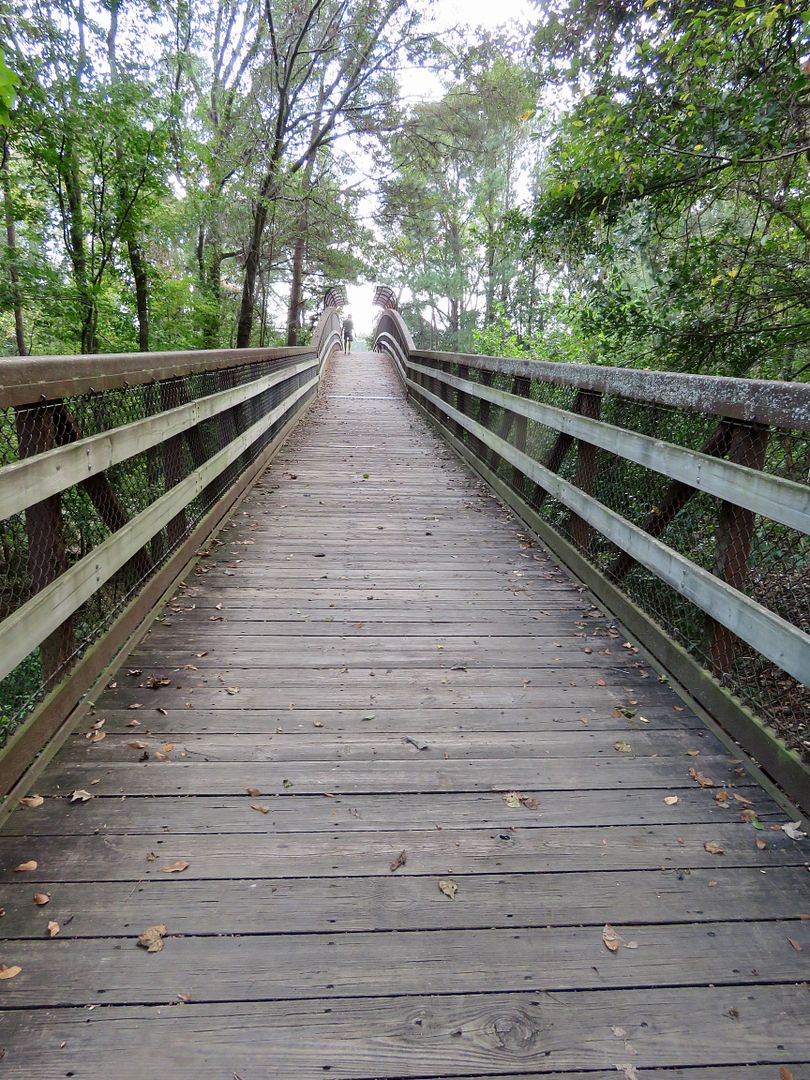
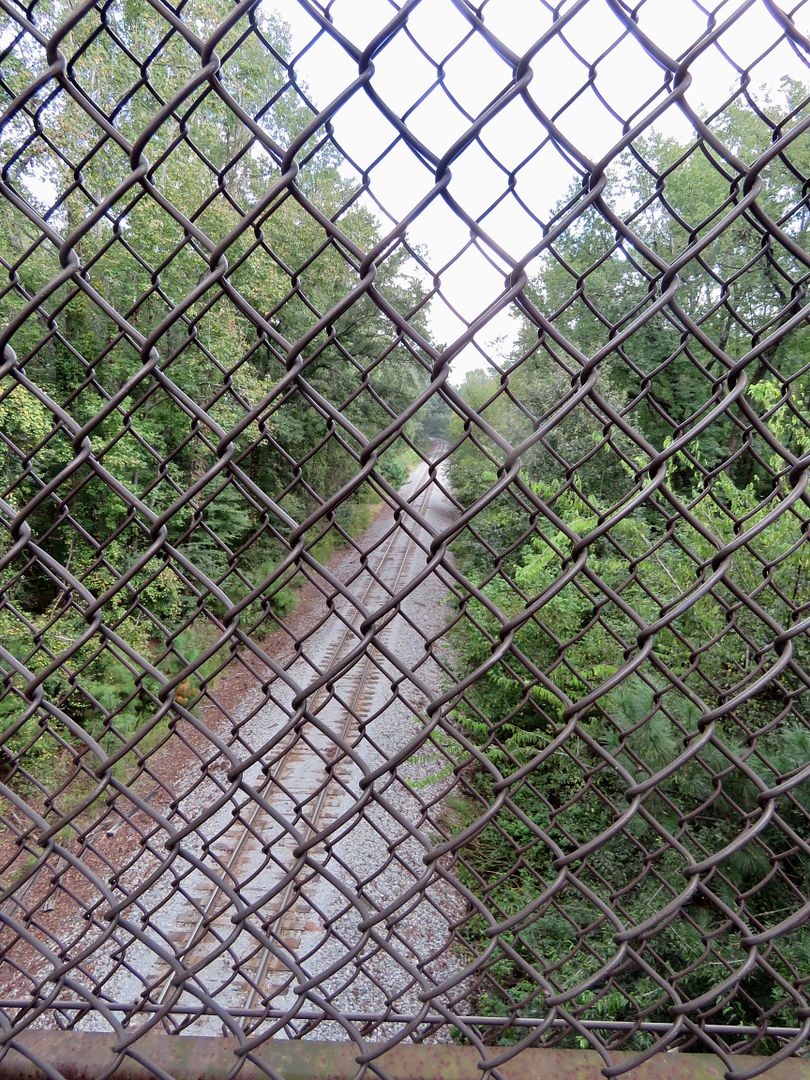
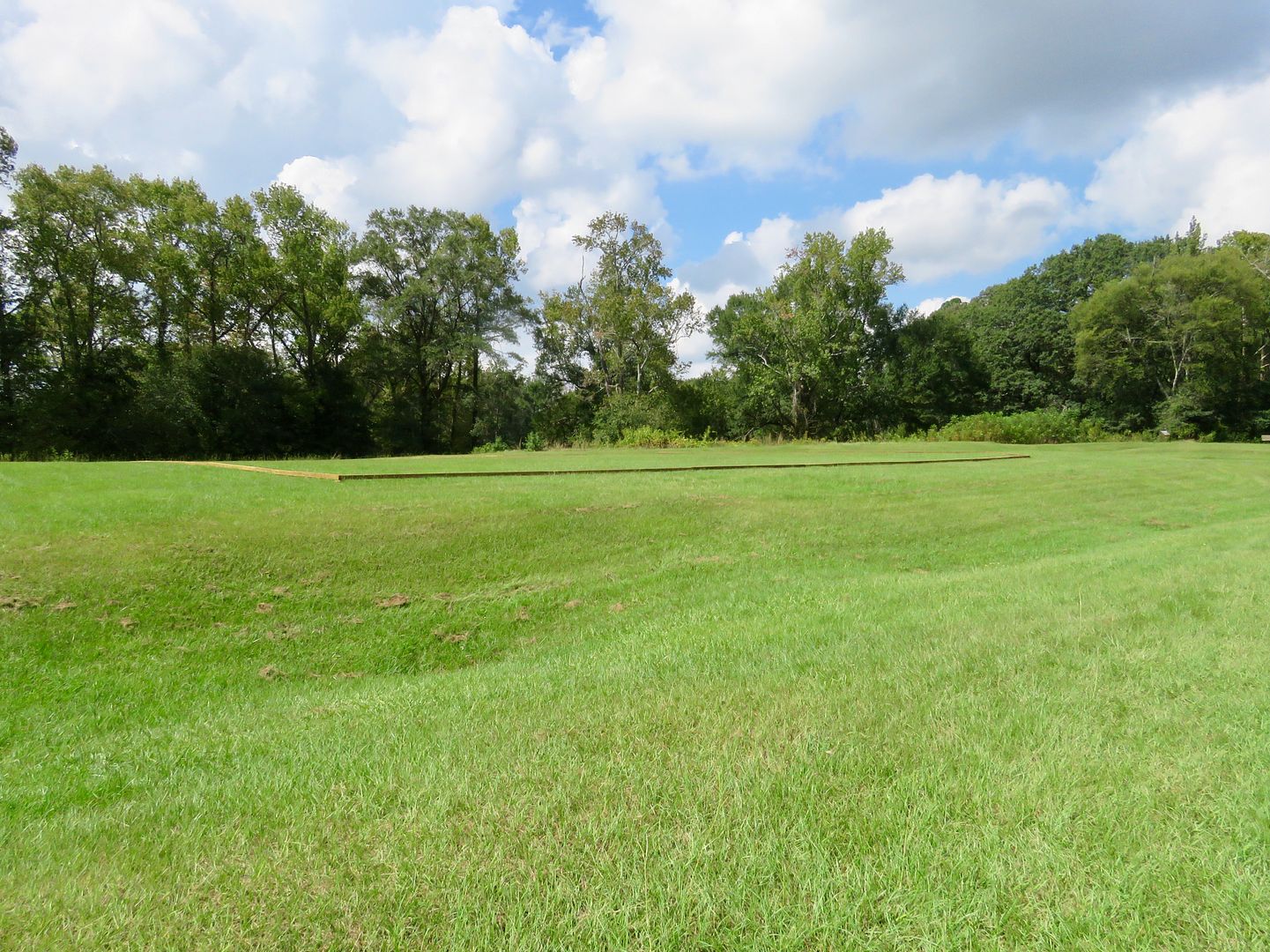
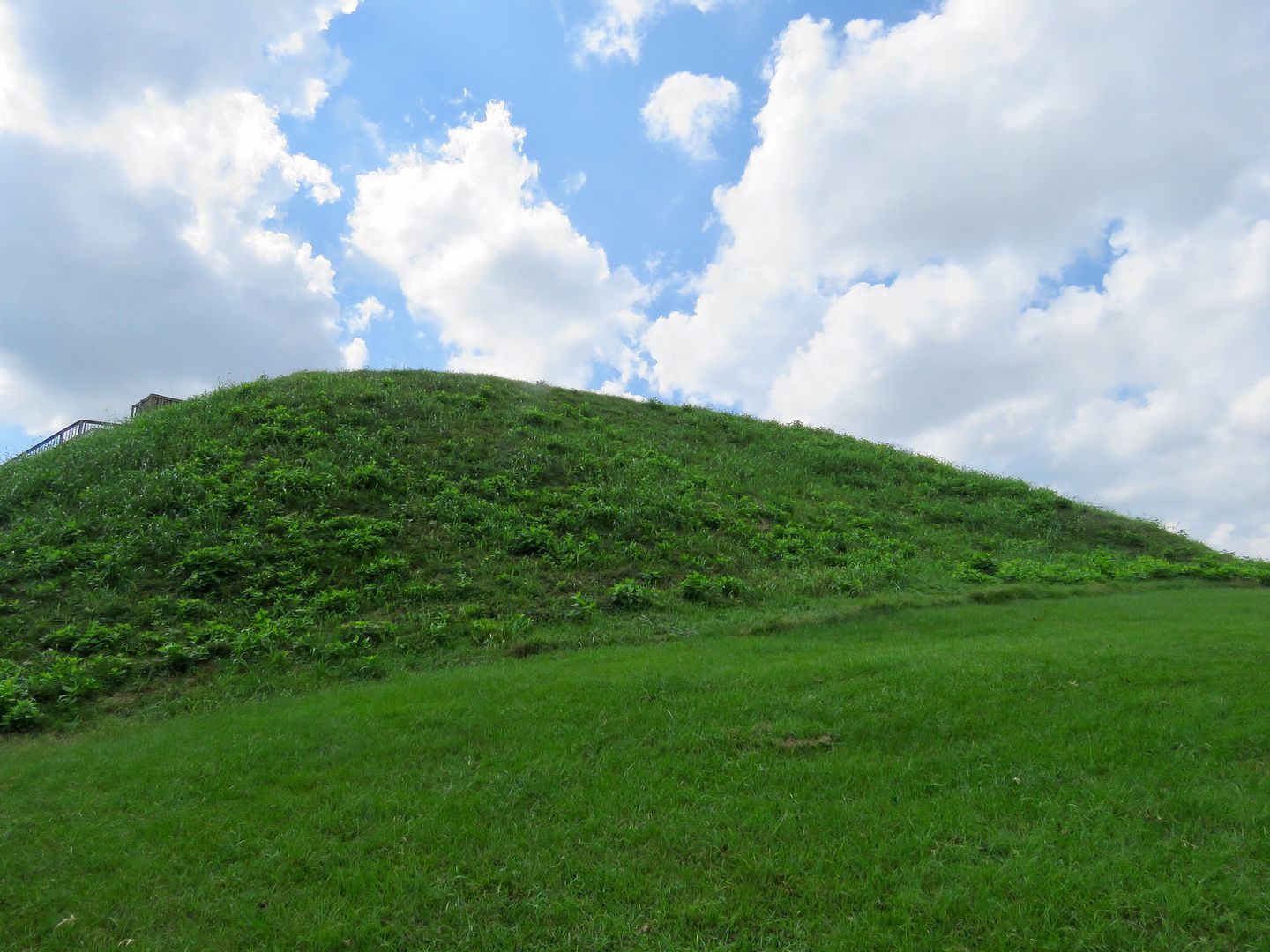
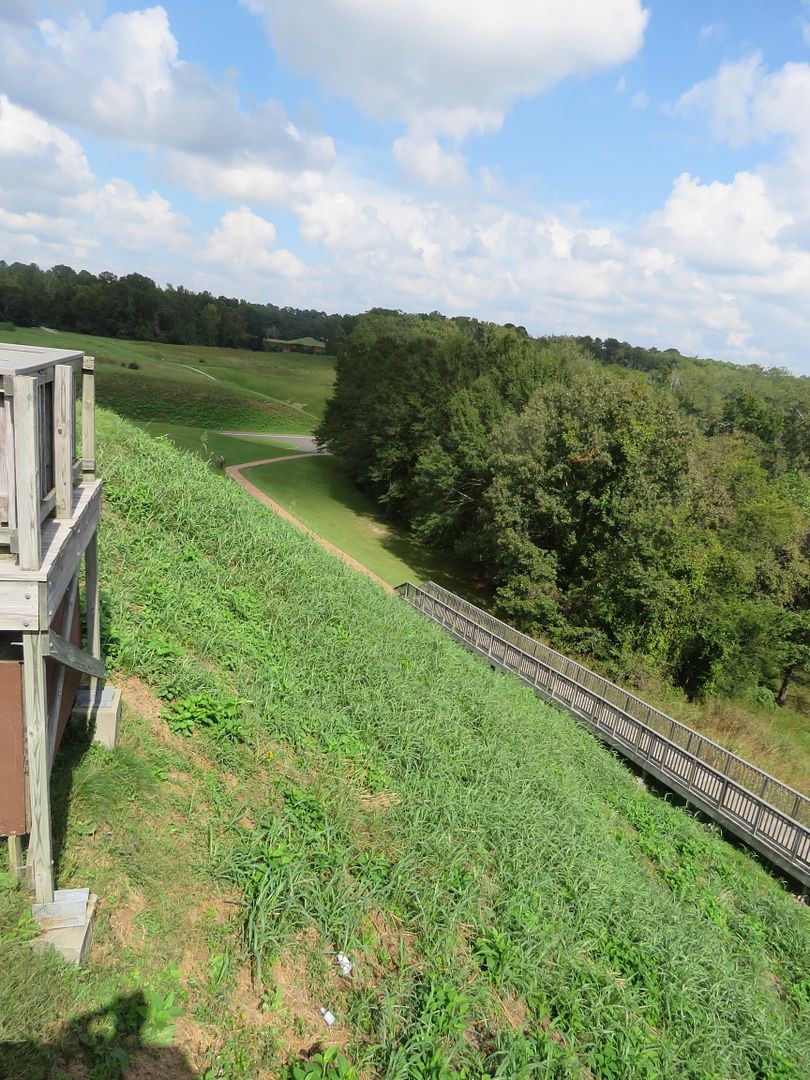
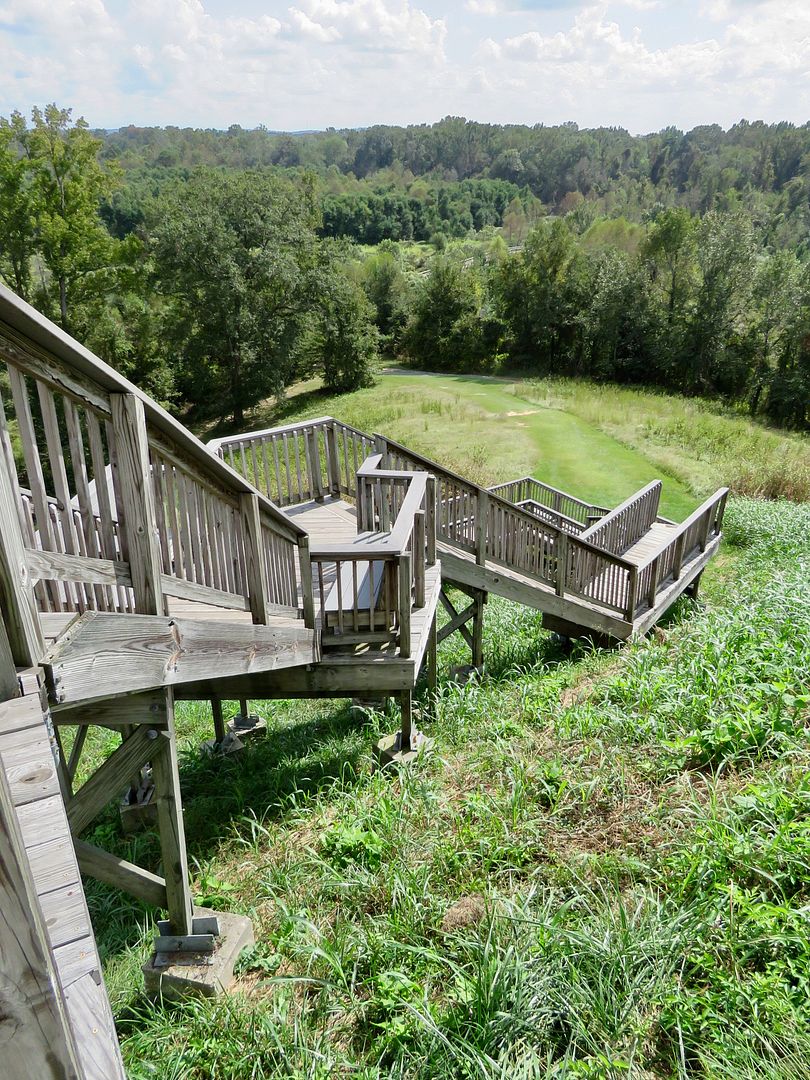
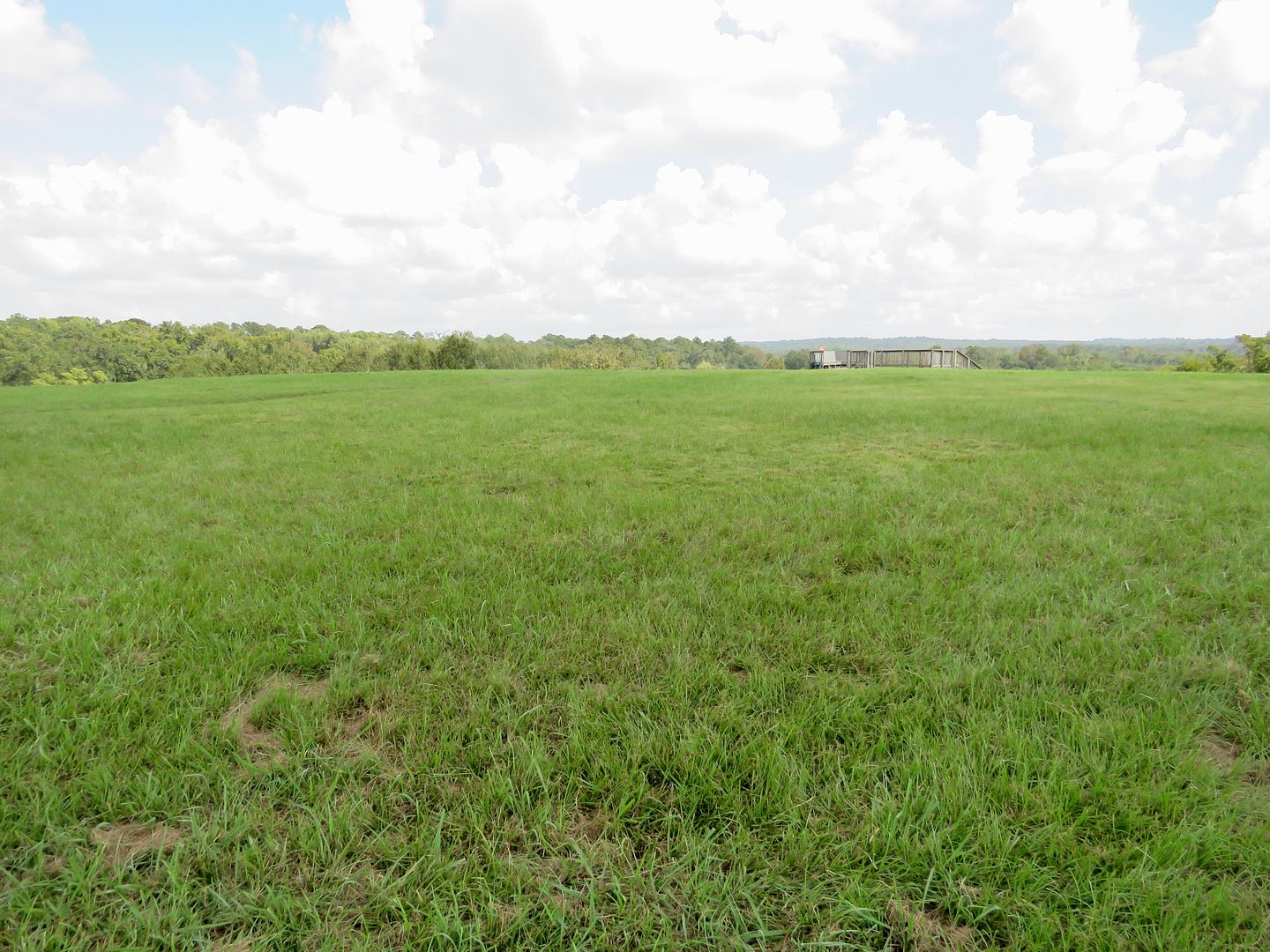
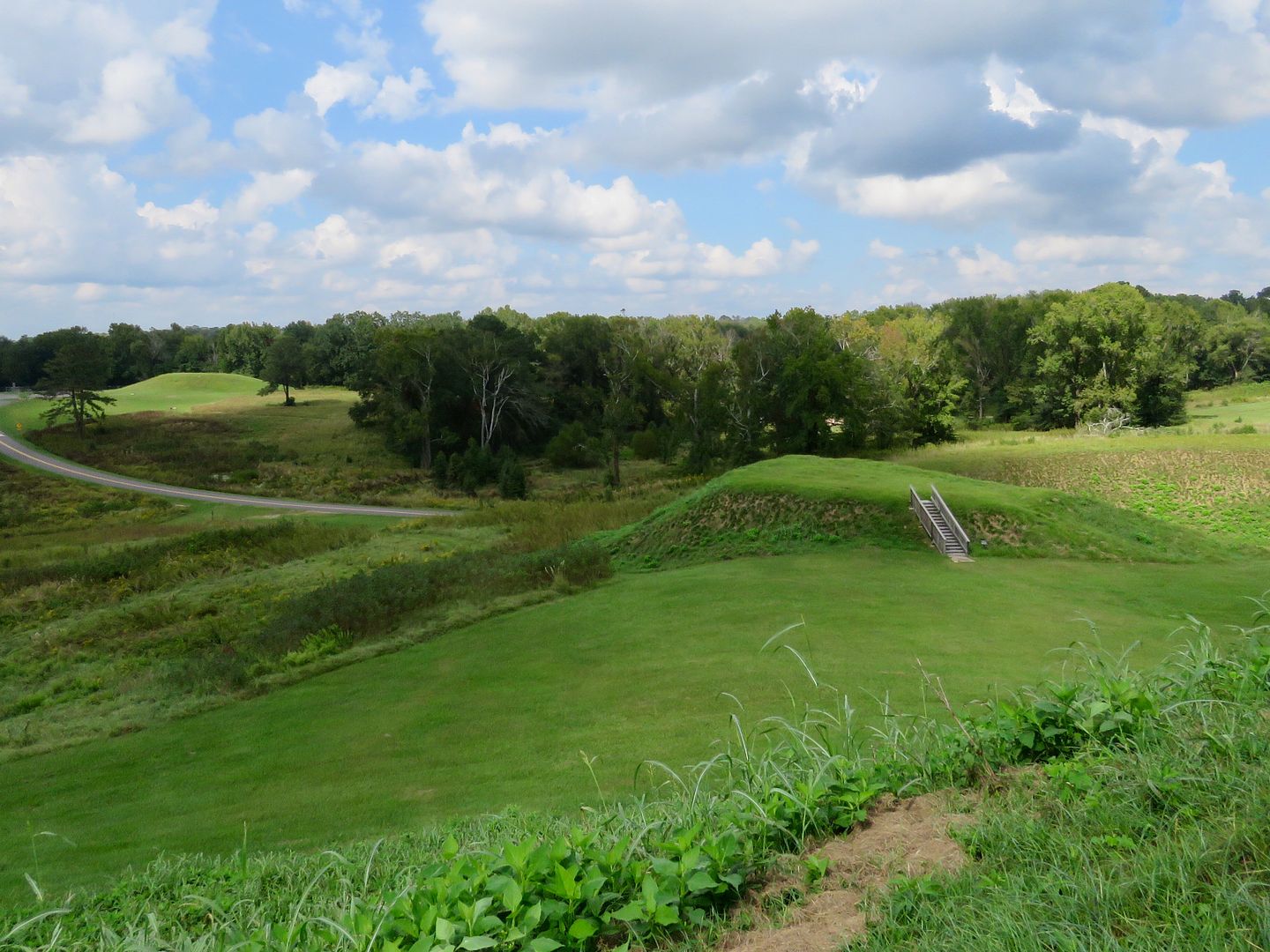
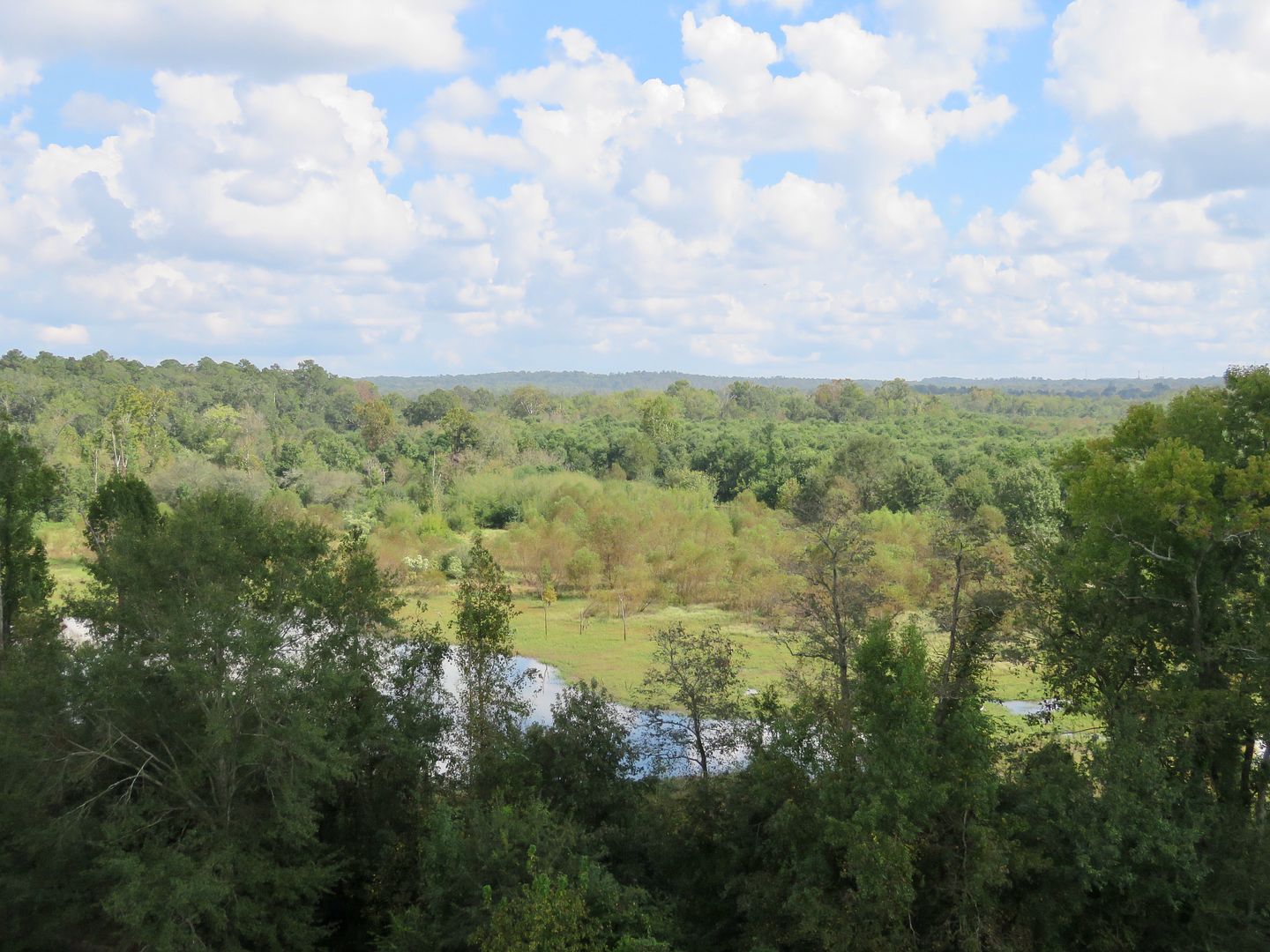
No comments:
Post a Comment